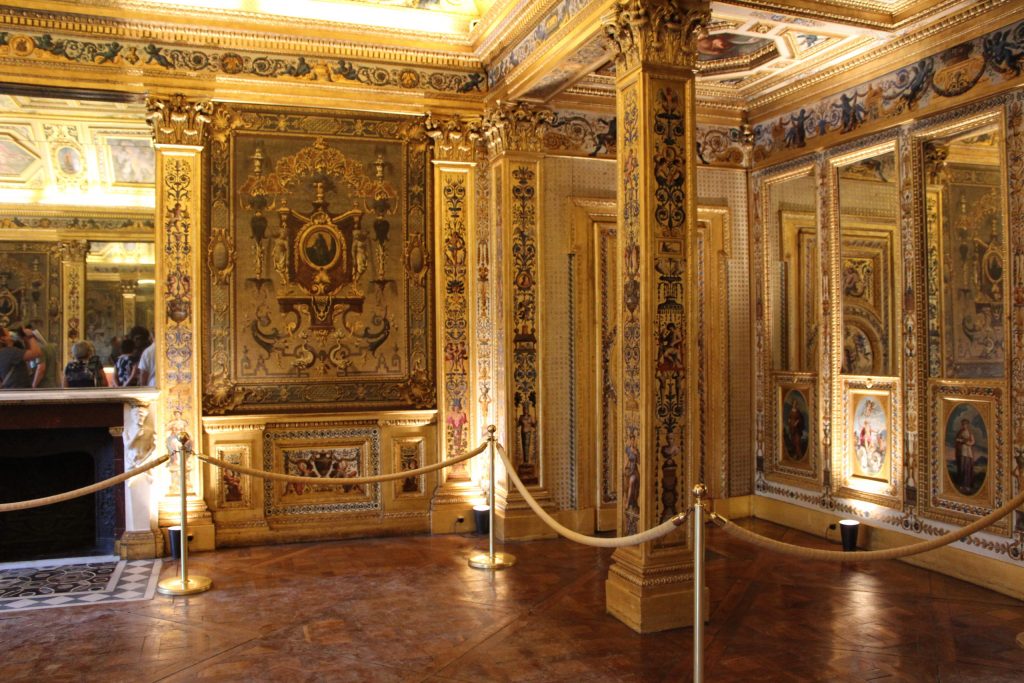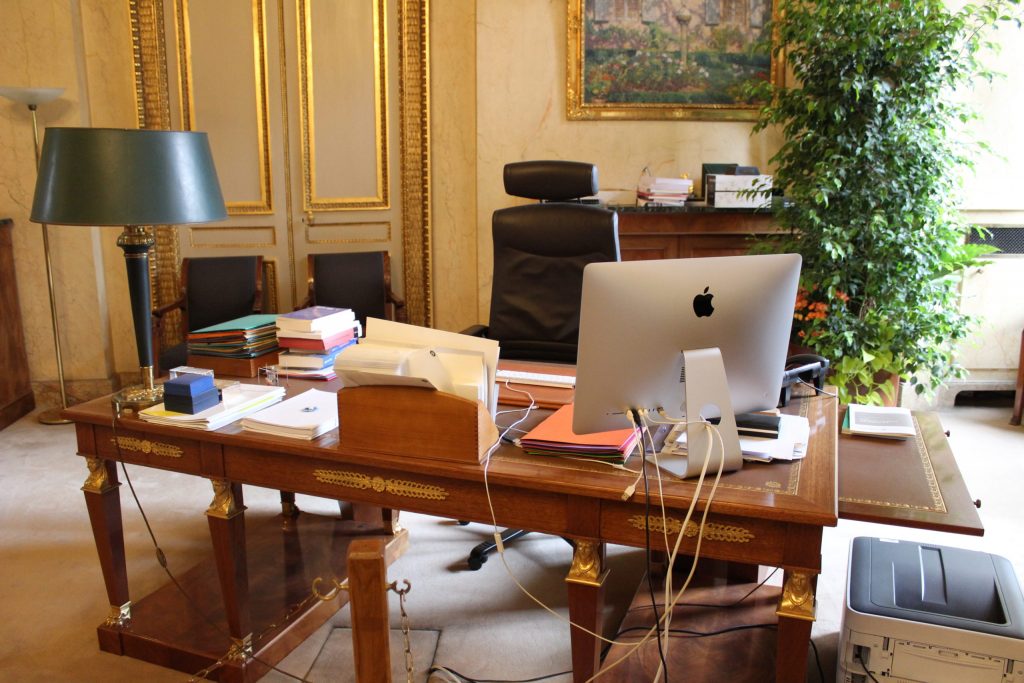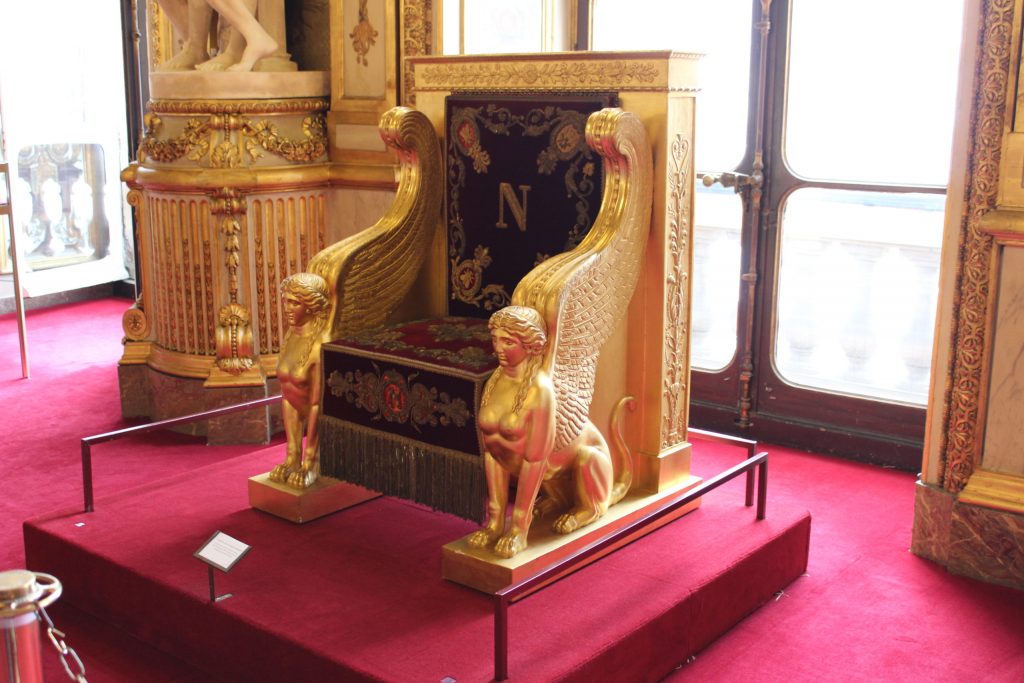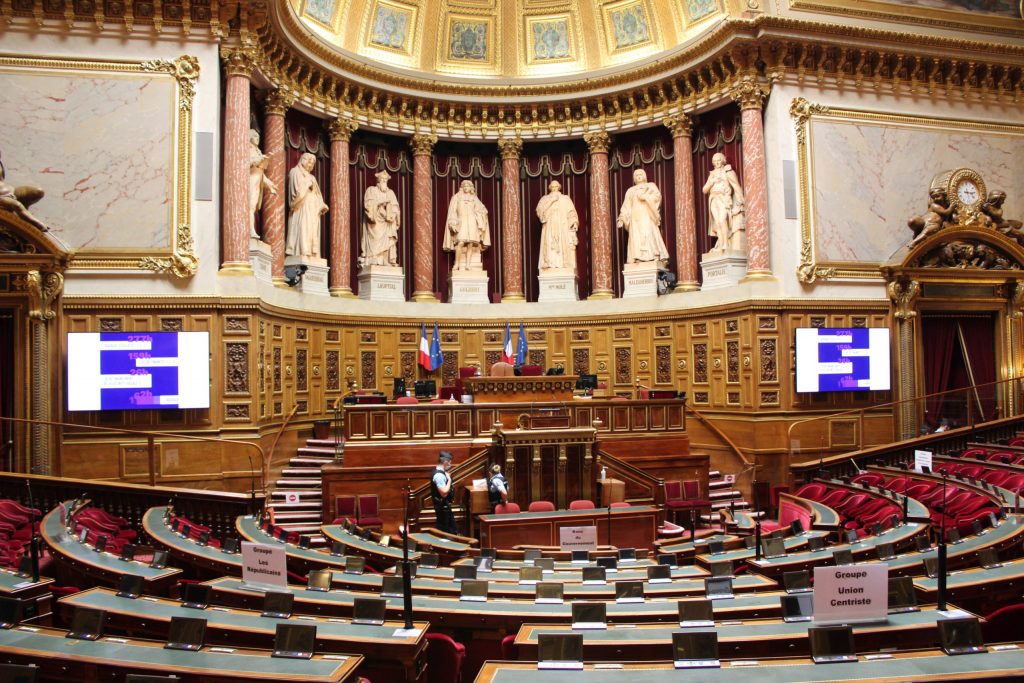This past weekend I attended the European Heritage Days, known as Journées Européennes du Patrimoine in France. This annual tradition began in 1984 with what was then called the Day of the Open Doors. Cultural institutions, monuments, and buildings all over France that are normally closed to the public opened their doors and welcomed visitors for free. The tradition expanded to other European countries the following year, and it is now observed by 50 member states annually. I was worried that this year’s heritage days would be cancelled due to the ongoing COVID-19 pandemic, but it was announced last month that the event would go on as scheduled. With rigorous safety and sanitization measures in place of course. There were dozens of sites to visit in Paris, but I had my heart set on just one. The Luxembourg Palace.
The Luxembourg Palace presides over the beautiful Luxembourg Gardens in the Latin Quarter. It was originally built between 1615 and 1630 by Marie de Medici, wife of King Henry IV, and Queen Regent of France after her husband’s assassination on May 14th, 1610. It was her home until her exile in 1631, and later became the residence of a succession of royal descendants. The building was used as a prison during the French Revolution, before becoming the home of the French Senate in 1879. It has now been the seat of the Senate of the Fifth Republic since 1958.
As a government building, the Luxembourg Palace is normally closed to the public. However, I had heard rumours of its beautiful interiors for years, and I knew that if I ever had a chance to visit, I would take it. This past weekend was that chance. And apparently, I was not alone in this thinking. The first thing I saw upon arriving at the entrance was a posted warning that wait times were likely to exceed 2.5 hours. With that warning in mind, I resolutely joined the queue, hoping the building would be worth the wait. Spoiler alert, it was. The wait time ended up being less than 90 minutes, but I would have happily waited three times as long once I saw what was waiting within.

In general, government buildings tend to be grand in scale. This building, however, took it to another level entirely. I suppose that’s what happens when a building is designed by a Medici. Every room was stunning, with extravagant detailing, architecture, and artwork on display. But it was also very clear that this was a functioning workspace. The visit included the offices of several high level officials, complete with computers, printers, and photocopiers. It was quite a surreal contrast to the grandiose stylings that surrounded them, let me tell you.

Perhaps the most visually impressive room was the Conference Hall. It was a stunning gallery, covered in gold, beautiful frescos, and shining chandeliers. The original, handwritten constitution of the current republic was on display, as was the remarkably modest throne of Napoleon Bonaparte. All in all, I may have spent a good 15 minutes just taking it all in. It was that spectacular.

I thought the Conference Hall would be the highlight of the visit, but I was quickly proven wrong. We were allowed to walk through the actual Senate Chamber where the 348 French Senators sit for plenary sessions. We were able to walk through the Senate library, which made my heart seize up in joy. And we passed through the former bedroom of Marie de Medici, where the infamous Day of the Dupes began on November 10th, 1630. The visit ultimately included dozens of rooms across multiple wings and buildings. It was an extraordinary visit for an extraordinary building.

And what of the titular heart attack? Well, as you can imagine, the level of security for such an important government building was extremely high. There were guards, sentries, and police keeping watch every couple of feet. Therefore, when I accidentally almost knocked over a sign and a line barrier, I was convinced I would be escorted out for causing a ruckus. Thankfully I wasn’t, but I did have a near heart attack.
Half an hour later, it happened again. Upon entering the beautiful chapel of Marie de Medici, I was mid-“Wow!” when I tripped over the altar and almost fell flat on my face. The policeman keeping watch made a move towards me, and that was officially my second heart attack of the day. I immediately let out a string of apologies, and thankfully managed to emerge from my visit without a trip to the Senate jail. If they even have one. I suppose that will be a question for next year’s Heritage Days.
Laura Moore is a professional storyteller who loves history and the many stories that make Paris one of the most fascinating cities in the world. Join one of her signature tours to learn the story of a city.




